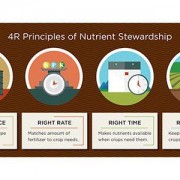Sustainability – What is It?
Are you sick of buzzwords? They’re everywhere…all the time. Some are actually impactful, but all are meaningless without context.
One buzzword that actually has some meat is “sustainability,” but in the next breath it’s meaningless because it can be over-used, misinterpreted, or put into the wrong context. Often times the word is attached to “environmental” sustainability and conjures up visions of environmental enthusiasts/activists/evangelists, but the term sustainability is simply defined as being able to last or continue for a long time.
Ref. https://www.merriam-webster.com/dictionary/sustainable
Using that frame of reference, let’s focus on the financial aspect.
You have put many changes in place in your business over the years. Ranging from new/improved processes to increased size & scale, each change has had an impact on your business. No question, your intention has always been to implement a change for the betterment of your business. But prior to initiating any action, was an assessment of the sustainability of the proposed change ever done? How did you quantify the impact of the change?
There are many success stories floating around lately about producers who gave up some rented land and increased their overall business profits from doing so. While this is counterintuitive to the deeply embedded mindset that “bigger is better,” clearly the financial sustainability of the status quo was in question for these particular operations.
What is the financial sustainability of increasing the size of the factory (more land), adding capacity (more/bigger/newer equipment), or increasing labor (more people)? Each of these needs to be evaluated beyond the obvious cash costs. What are the incidental costs, meaning:
- Increasing the size of the factory (More Land) carries
- Higher ownership/operating costs for PP&E (property, plant, & equipment);
- More cash to service debt on the asset;
- Change in insurance costs (which way will premiums go, up or down?)
- Change in utilities costs (which way will heat and power go, up or down?)
- More working capital to be able to utilize the increased scale of the business;
- Etc.
- Adding Capacity (More/Bigger/Newer Equipment) carries
- Higher costs for PP&E (property, plant, & equipment);
- More cash to service debt on the asset;
- Change in insurance costs (which way will premiums go, up or down?)
- Change in operating costs (which way will fuel and repairs go, up or down?)
- Will you need to add staff (another operator)?
- Will you need to upgrade your systems and/or technology so the new equipment can operate relatively seamlessly in your existing set-up?
- Increasing Labor (More People) carries
- Additional cost for benefits (pension, vacation, etc.)
- Higher management requirement (to approve holidays, implement performance evaluations, conduct scheduling);
- Any additional tools for employees to use (hand tools, vehicles, computers, etc.)
- Training costs.
Each of these points above has an impact on the decision to increase the size of the factory, the capacity of the equipment, or the volume of human capital in your business. Evaluating each decision above with a broader perspective, which would include an expected ROI (Return on Investment), is the best way to understand the sustainability of each option. If the desired change to your business provides insufficient ROI, it puts the sustainability of not only the project but your entire business in question. At minimum, ROI must exceed the cost of borrowed capital that was utilized for the project.
Plan for Prosperity
Buzzwords aside, sustainability is as much of a mindset as it is a business practice. Sustainability deserves a place in your business’ values and mission & vision statements. It should make up a component of every business decision that you consider. If your business is not sustainable, what are your plans for afterwards?











Leave a Reply
Want to join the discussion?Feel free to contribute!